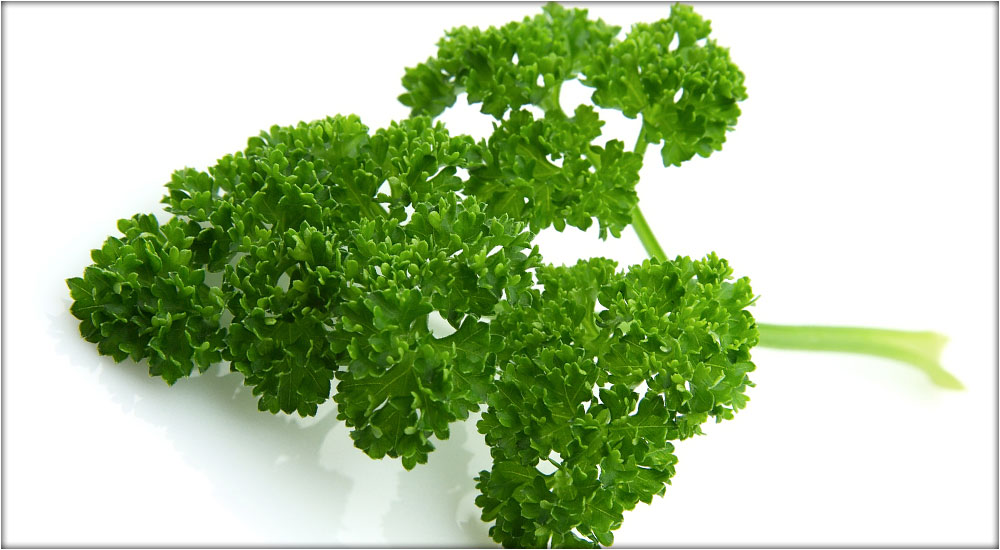Salmon with Spicy Cucumber-Pineapple Salsa
- 13 Apr - 19 Apr, 2024

Parsley provides 36 calories per 100gm; 0.8g of fat, 554mg of potassium, 56mg of sodium, 3g of protein and 6g of carbohydrate.
· Parsley was used in ancient Rome as a salad ingredient, to eliminate effects of hangover and as ornaments in the form of garlands for the head.
· Parsley has a prolonged germination period (of at least one month). Gardeners like to plant parsley near roses (to keep them healthier and to intensify their smell) and tomatoes (because parsley attracts bees – the main pollinators of tomatoes).
· Parsley is used in cosmetic industry for the preparation of soaps and body lotions that are especially good for dry skin.
· Parsley is a biennial plant, which means that it completes its life cycle in two years.
· Parsley is a rich source of vitamins K, C, A and vitamins of the B group.
· It also contains dietary fibres and minerals such as potassium, magnesium, calcium and iron.
· Chewing parsley can aid in elimination of bad breath, especially after consumption of garlic.
· Parsley has antibacterial and antifungal properties.
· Tea made of parsley improves blood circulation. These leaves can be used in treatment of superficial wounds, while juice squeezed from its root reduces swelling.
Animal studies showed that oil extracted from parsley has antitumour properties (prevents growth of tumour).
COMMENTS